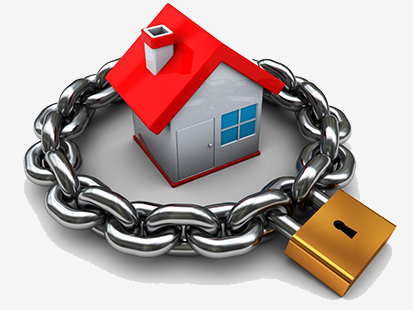Cabling Guidelines

These days a robust home network is no longer a luxury
but a necessity. With more devices than ever relying on
internet connectivity, setting up an efficient home
network has become crucial for seamless digital
experiences and we understand the importance of a
well-configured home network. In this guide, we’ll explore
the fundamentals of home network setup, focusing on the
critical role of data cabling and networking.
The Importance of a Quality Home Network
A well-structured home network ensures reliable internet
access, seamless streaming, and effective communication
between various devices in your home. Whether it’s for
work, entertainment, or smart home functionality, a robust
network is the backbone of your digital life.
Understanding Data Cabling and Networking
Data cabling and networking form the core of any home
network. Proper cabling is essential for high-speed and
stable internet connections. Choosing the right type of
cables and setting them up correctly can significantly
impact your network’s performance.
Types of Data Cables
Cat5e/Cat6/Cat6a Cables: These are standard Ethernet
cables used for most home networking setups. They differ
in speed and bandwidth capacities, with Cat6a supporting
the highest speeds.
Fibre Optic Cables: Known for their high-speed data
transmission, these cables are ideal for homes requiring
extensive bandwidth and faster internet speeds.
Structured Cabling Systems
A structured cabling system organises your cables and
networking equipment, making it easier to manage and scale
your network in the future. This system typically includes
patch panels, routers, switches, and cable pathways.
Networking Devices
Routers: These devices connect your home network to the
internet, managing data traffic efficiently.
Switches: Useful for larger homes, switches allow for more
ports to connect additional devices.
Step-by-Step Guide to Setting Up Your Home Network
Step 1: Planning Your Network Layout
Before diving into the physical setup, it’s crucial to
plan your network layout. Consider the size of your home,
the number of devices, and where you’ll place the router
for optimal coverage. Remember, the location of your
router significantly affects the strength and reach of
your Wi-Fi signal.
Step 2: Choosing the Right Data Cables
Based on your network needs, select the appropriate data
cables. For most homes, Cat6 cables are a reliable choice,
offering a good balance between speed and cost. For larger
homes or those requiring high-speed internet for
activities like gaming or streaming, consider Cat6a or
fiber optic cables.
Step 3: Installing Data Cables
Professional Installation: For an efficient and safe
installation, consider hiring professionals like Hilton
Electrical. They can ensure your network cabling is
installed correctly and safely, avoiding common pitfalls
like electrical interference or physical damage to the
cables.
DIY Approach: If you’re experienced and comfortable with
DIY projects, you can run the cables through walls,
attics, or along baseboards. Ensure you follow safety
guidelines and local building codes.
Step 4: Setting Up Networking Equipment
Router Installation: Place your router in a central
location. Avoid areas with physical obstructions or
interference, like thick walls or near large metal
objects.
Switch Installation: If your home has many devices or
spans a large area, incorporating a network switch can
enhance connectivity. Connect the switch to your router
and then connect other devices to the switch.
Step 5: Configuring Your Network
Once everything is physically set up, configure your
network:
Secure your Wi-Fi network with a strong password.
Update your router’s firmware to the latest version for
enhanced security and performance.
Consider setting up a guest network to keep your main
network secure when visitors need internet access.
Step 6: Testing and Troubleshooting
Test your network by connecting various devices. Check for
consistent internet speed and coverage throughout your
home. If you encounter issues, troubleshooting steps
include checking cable connections, restarting your
router, or updating device settings.
Maintaining and Enhancing Your Home Network
Regular Maintenance Tips
Maintaining your home network is essential for consistent
performance and security. Here are some key maintenance
tips:
Regularly Update Firmware: Keep your router’s firmware
up-to-date to ensure security patches and performance
improvements are in place.
Monitor Network Performance: Use network monitoring tools
to keep an eye on internet speeds and identify any
connectivity issues.
Physical Inspections: Periodically check cables and
networking equipment for any signs of wear or damage.
Advanced Networking Options
For those looking to further enhance their home network,
consider the following advanced options:
Wi-Fi Mesh Systems: Ideal for large homes, mesh systems
use multiple router-like devices to provide widespread,
consistent Wi-Fi coverage.
Network Security Enhancements: Implement advanced security
measures like firewalls, VPNs, and network segmentation to
protect against cyber threats.
Smart Home Integration: Integrate your network with smart
home devices for automated control and improved
efficiency. Ensure your network can handle the increased
load of smart devices.
Quality of Service (QoS) Settings: Adjust QoS settings in
your router to prioritise bandwidth for critical
applications like video conferencing or streaming.
When to Seek Professional Help
If you’re facing persistent network issues or planning a
complex network setup, it’s advisable to consult with
professionals. GDS offers expert services in
network installation, troubleshooting, and maintenance,
ensuring your home network meets your specific needs and
functions optimally.
Conclusion
Setting up and maintaining a home network requires careful
planning, the right equipment, and regular maintenance. By
following this comprehensive guide, you can create a
robust and efficient home network that caters to all your
digital needs. For any assistance or advanced networking
solutions, GDS is just a
call away.
